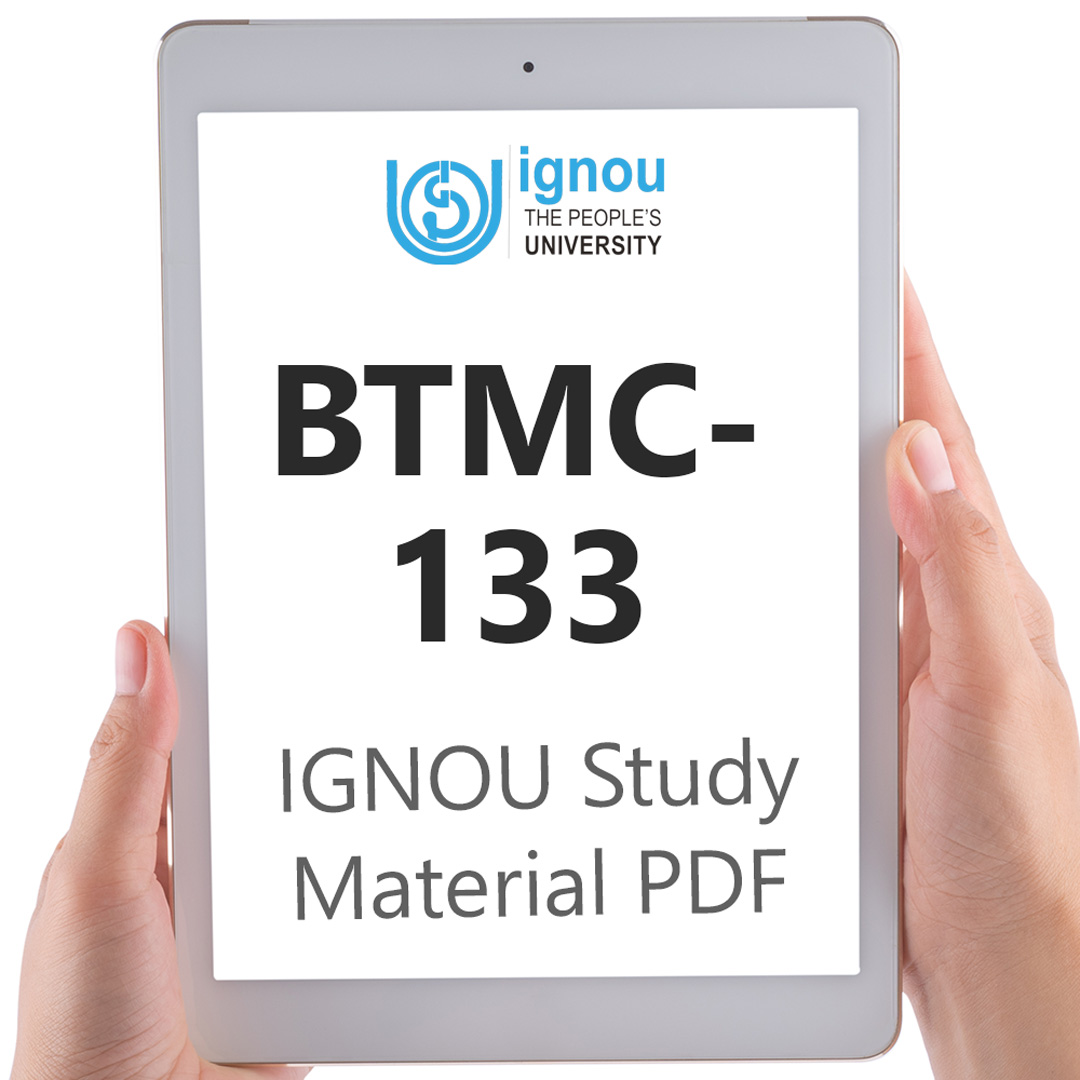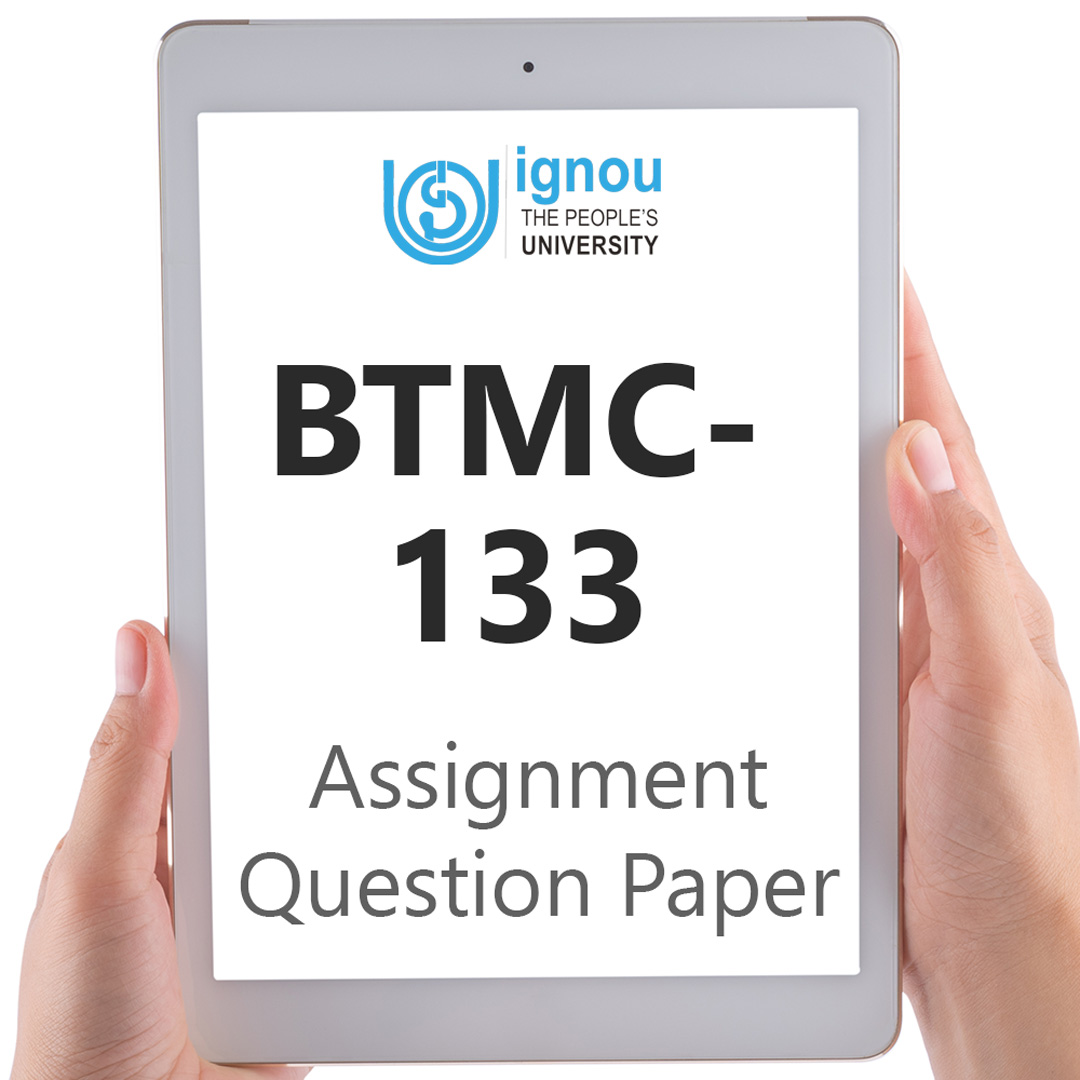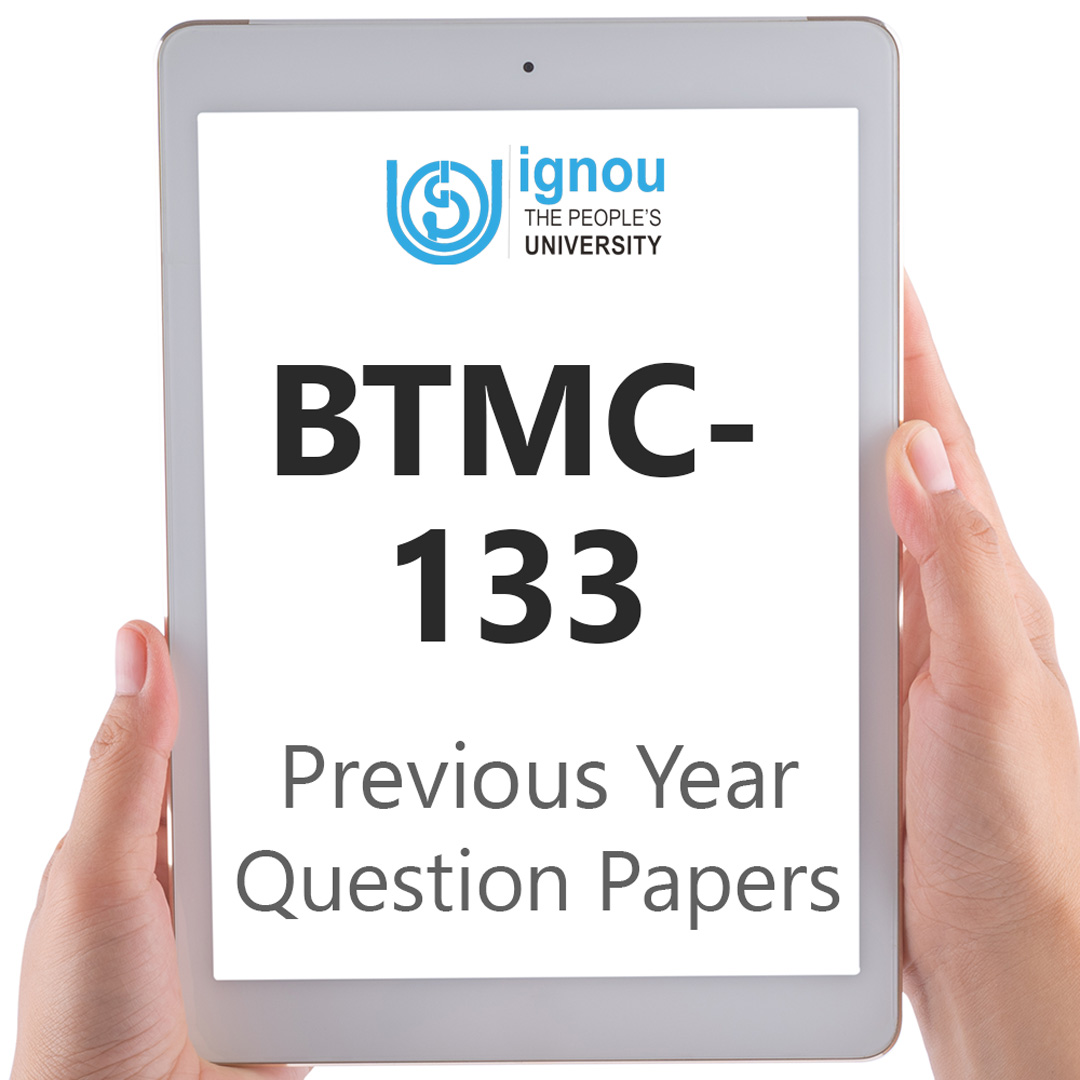If you are looking for BTMC-133 IGNOU Solved Assignment solution for the subject History of Tourism – II, you have come to the right place. BTMC-133 solution on this page applies to 2022-23 session students studying in BAVTM courses of IGNOU.
BTMC-133 Solved Assignment Solution by Gyaniversity
Assignment Code: BTMC-133/TMA/2022-23
Course Code: BTMC-133
Assignment Name: History of Tourism-II
Year: 2022-2023
Verification Status: Verified by Professor
Assignment A
Answer the following in about 500 words each.
Q1) Discuss the different types of accommodation facilities available for tourists.
Ans) "An establishment that provides facilities and services for sleeping, resting, relaxing, and having fun to persons who are temporarily away from their place of residence or place of employment and charging them for those accommodations" is the definition of an accommodation. Two distinct categories can be distinguished within the hospitality industry on the basis of the breadth and depth of services provided as well as the organisational structure of the sector. It can be classified as either:
Organised Sector / Serviced / Traditional Accommodation: It refers to the services that Hotels, Motels, Resorts, Lodges, Pension Houses, etc. offer their guests, such as a place to stay and food.
Unorganised Sector/ Self Catering/ Supplementary/ Alternate Accommodation: It refers to places like Youth Hostel, Dharmshalas, Camping, Caravan, Guest Houses, Home Stays, and others that have places to stay but don't offer other services.
Types of Accommodation: Organised Sector
Hotels are among the most common and well-known venues for visitors and business travellers to spend the night. Hotels are among the most essential places tourists and business travellers can stay. To the extent that they have the financial means to do so, vacationers can use it as a location to stay and eat while they are in the area. The hospitality and hotel industry is seeing a number of new trends and new concepts, which has resulted in a variety of new ways for us to categorise hotels.
The following categories of hotels can be distinguished from one another:
a) Classification on the basis of Room Charges
1) Budget Hotels
2) Mid- Market/Mid
3) iLuxury Hotels
b) Classification on the basis of Size
1) Small Hotels
2) Medium Hotels
3) Large Hotels
4) Very Large Hotels
c) Classification on the basis of Location
1) Business / Commercial / Downtown Hotel
2) Sub-urban Hotel
3) Resorts Hotel
4) Airport Hotel
5) Motel
6) Rotels - Rotel stands for “Rolling Hotel”.
7) Flotel
8) Lotels
d) Classification on the basis of Length of Stay
1) Transit / Transient Hotel
2) Residential Hotels / Service Apartments
3) Semi - Resident Hotels
4) Extended stay hotels
e) Classification on the basis of Facilities and Service Provided
1) Boutique Hotel
2) Star Category Hotels
3) Heritage Hotels
4) Casino Hotels
5) Conference Centres
6) Green Hotels
7) Capsule Hotels
f) Classification on the basis of Ownership and Management
1) Individual/ Independent Ownership
2) Chain / Group
3) Management Contract
4) Franchise
5) Time share
6) Condominium
Types of Accommodation – Unorganised Sector/ Alternative Accommodation
The unorganised sector is the one in which keeping an accurate record of the number of tourists who visit and the length of their stays is difficult or impossible. In addition, there is no regulatory agency or association that can be discovered for all of these suppliers of housing in India. These are the available accommodations:
Sarai/ Dharamshala
Dak Bungalow/Circuit Houses/Inspection Bungalow/First lodges
Lodges/Boarding House
Youth Hostel
Yatri Niwas
Railway/Airport Retiring Rooms
Home Stay Accommodation
Camping Grounds /Tourist camps
Q2)What are the components of Tourism? How can we classify Tourist Attraction?
Ans) Tourism is an industry made up of parts or sectors that work together. Components are the parts of a machine that make it work. Without them, the machine won't work. So, tourism components are the parts of the tourism industry that make the whole thing work. Those the tourism industry is so big, it can be helpful to break it down into its basic parts, which are often called the "A's of Tourism.” These parts of tourism, or "A's," are:
Attraction: An attraction, also called Tourism Patrimony, is something that brings tourists to a place. There is no easy way to list or figure out what a place has to offer. Everyone knows that what interests one person might not interest another person at all.
Accessibility: Accessibility refers to how a tourist can get to a destination or site, mostly in terms of transportation. Accessibility means that you can get to the destination and all of its attractions by road, rail, air, or water.
Accommodation: An accommodation is a place where you can stay and eat. It can also be a tourist attraction in and of itself, like at specialty resorts.
Extras: Amenities in tourism mean the services and facilities that tourists need and are given to them while they are at their destination.
Activities: Activities are the different ways that tourists can have fun and use the facilities that are available to them. Tourists can do things like sight-seeing, shopping, sunbathing, rural tourism, adventure sports, golfing, dance lessons, cooking classes, wine tasting, etc., at the destination.
People think that attractions are the most important part of tourism. Attraction refers to anything that makes someone want to go to a certain tourist site or destination. Attractions are necessary for travel because they bring people to a site or destination, give them pleasure, and make them want to stay and enjoy tourism activities. Attractions can be either natural or man-made. Natural attractions include landscape, seascape, beaches, and climate. Man-made attractions include monuments, theme parks, museums, and fairs, national Parks.
Attractions in Nature
Natural Attractions
Good weather or climate
Scenic Places
Flora and fauna
Beaches
Islands
Man-Made Attractions
People make and improve man-made attractions for fun, business, or other reasons. For instance, old buildings, monuments, temples, churches, amusement parks, theme parks, museums, nightclubs, casinos, and so on. More and more tourists are becoming "special interest travellers" who put arts, history, or other cultural activities in their top five reasons to travel. Some man-made tourist destinations are:
Historical attractions
Cultural attractions
Purpose-Based Attractions
Hybrid/Mixed Attractions
Hybrid or mixed attractions are the cultural and natural attractions that are made more interesting by adding value to them. They are called "mixed attractions" because they have both natural and man-made things to see. For example: resorts, national parks, wildlife sanctuaries, aquariums, petting zoos, farms, zoos, wellness centres, etc.
Here are some examples of mixed or hybrid tourist spots:
Spas and Wellness Centres
National Parks, Wildlife Sanctuaries, Aquariums, and Other Places
Resorts
Assignment B
Answer the following questions in about 250 words each.
Q3) What do you understand by Industrial Revolution? What are the factors that led to Industrial Revolution?
Ans) The time we're going to look at, from 1760 to 1840, is usually called the time of the Industrial Revolution. Jerome Adolphe Blanqui came up with the term in 1837, but Arnold Toynbee deserves the credit for it being used so often for more than a century. It was his "Lectures on the Industrial Revolution" that gave the term "Industrial Revolution" to the social and economic changes that happened in Britain during that time. The Industrial Revolution started because of both export markets and domestic markets.
Domestic Markets
Long periods of economic growth and rising incomes, especially in the first half of the 18th century, led to a strong home market in the decades before industrialization. It was also helped by the fact that, during the Industrial Revolution, the population changed, with more young adults and fewer children. The home market had the most specific and important effects in three areas: transportation, food, and coal. As many of Britain's manufactured goods were sold all over the country, cheap and reliable ways to get around were needed.
The Export Market and Sources of Raw Materials from Outside the Country
The export market gave the spark and energy that were needed for a big change like the Industrial Revolution. This incredible growth in export markets was the spark that set off industrial growth. Cotton textiles, which were the most important industry during the Industrial Revolution, relied heavily on exports. Also, raw cotton was a raw material that couldn't be grown in Europe because of the weather, so all of it had to be brought in.Sea transportation got a lot better because of trade, which in turn led to a lot of practical innovations and a lot of profit-minded practical men.
Q4) Give an account of the automobile and coach tours.
Ans) An automobile, as it is known to all, is usually a four-wheeled vehicle used for transportation. In modern times, when tourism is seen as a money-making activity, cars are seen as having the most important roles. In modern times, when tourism is seen as a money-making activity, cars are seen as having the most important roles. Automobile and coach tours make up most of the tourism in third-world countries because they are affordable and easy to get. In the U.S. and Canada, businesses like motels, restaurants, ski resorts, fishing and hunting resorts, amusement parks, and similar places depend on the operation of private passenger vehicle traffic. As surface transportation has grown, so has the need for food, rest, and gas at roadside stops. This has automatically led to the growth of related industries. In addition to cars, travellers also have the option of taking a motorcycle or other motorised vehicle.
Every year, these tourists visit the tourist attractions. States like Himachal Pradesh, Uttarakhand, and Sikkim give bikers the chance to see places that aren't often visited. These tourists like to plan their own trips to places with history, culture, and natural beauty. Camping tours are the only thing that these travellers are interested in. People in their 40s, 50s, and 60s with middle- to high-incomes and expensive motorcycles like to go on the popular motorcycle tour. Tourists from other countries who come to the USA also like to rent something called a recreational vehicle. When it comes to the things that make up Automobile, the list includes passenger cars, taxis, and rental cars.
Q5) What is the difference between a Tourist Guide and a Tour Escort? How can we classify Tourist Guides?
Ans) The word "escort," literally means that someone is following you or keeping an eye on you. When someone is your guide, you're following their lead. "A tourist guide is someone who takes people on short-term trips to see sights," says Mancini. On the other hand, a tour escort is a person who guides a group through a multi-day tour.
A tour guide is a trained person, sometimes with a specialty in an area like art, history, or natural attractions, who takes tourists to see works of art, museums, monuments, natural attractions, and other places and tells them about their history, culture, and other related things. On the other hand, a tour escort is a qualified person who travels with people to different places inside and outside of the country. This person makes sure that the planned trips go as planned by providing the necessary support services for the whole trip and giving important information about the site.
The main differences between tour guides and escorts are: A Tourist Guide is a professional with a licence, but a Tour Escort may or may not be a professional with a licence. In India, the Ministry of Tourism is in charge of giving Tourist Guides licences. Regional guides get their licences from the Ministry of Tourism. A tour escort is someone who stays with the tourist or tour group the whole time. A guide, on the other hand, may or may not stay with the tourist or tour group the whole time, depending on what he does. If necessary, a tour guide can also be a tour escort, but a tour escort can't be a tour guide without a licence.
Assignment C
Answer the following questions in about 100 words each.
Q6) Write a brief note on the Indian National Movement.
Ans) The Indian National Movement came about because colonial rule and the Indian people were at odds with each other. The British colonial rule in India was so foreign and used Indians for their own gain and it eventually led to many revolts by Indians against this government. In the second half of the 1800s, this also led to the growth of the national movement. The Indian National Movement became a mass movement, especially between the two World Wars.
It got a lot of people from different castes and classes to join the fight against British colonial rule. Mahatma Gandhi led the Congress to start three big mass movements: the Non-Cooperation Movement, the Civil Disobedience Movement, and the Quit India Movement. These movements shook the foundations of British rule in India. Besides these mass movements, the Indian struggle for freedom was also affected by the revolutionary terrorist movement, the peasant movement, and the workers' movement.
Q7) Define Tourism System. Explain the push and pull factors of Tourism System.
Ans) Tourism System, we mean the way of thinking about tourism that helps us figure out what its changing parts are. Tourism has very loose boundaries, and it is easy to mix it up with activities for fun and relaxation. The most interesting thing about the Tourism System is its historical potential for growth and the benefits that come from that. But the system works in a world economy where national priorities are also important. The "pull" and "push" factors in the Tourism System help solve these problems.
Pull factors
Governments
Employee
Business
NGO’s
Special Interest
Groups
Presenters
Push factors
Intermediaries
Groups
Individuals
Receivers
Q8) What are the role and responsibilities of a Tourist Guide?
Ans) Roles of a Tourist Guide: A tour guide is the public face of a tour company and the face of the country or place where a group of tourists is going. Their job is to help tourists get organised, get information, and have fun. They are also the translator between the host community and the guests they are guiding.
Responsibilities: Tourist guides organise, inform, and entertain. by Honesty is one of several tour guide duties. Tour guides must understand local customs. Inform tourists of their obligations. Greet when needed. The trip should start with audio headsets and booklets. Answer queries. You must know each checkpoint's history. Give directions to visitors who want to return later. Keep the tour group safe and happy.
Q9) What do you understand by standardization? Explain with the help of examples.
Ans) Standardization is a set of rules that everyone in an industry or organisation must follow. This is done to make sure that all the steps in making a product or providing a service are done within certain limits, i.e., to make sure that the quality of the final product is always the same and that any conclusions can be compared to all other items in the same class. Standardization could be a chance to write down best practises and make it easier for people and groups working on a complicated problem to work together. Globalization seems to be something that can't be stopped. Globalization has made it more important for organisations to have clear definitions, processes, and key performance indicators (KPIs).
Q10) Write short notes on any two of the followings.
a) Renaissance
Ans) People usually use the words "Renaissance" and "Reformation" to talk about this time of change. The word "Renaissance" comes from the French word "renaître," which means "to come back to life." It was used to describe the interest in the learning of ancient Greece and Rome.
b) Future trends in Transportation
Ans) Transportation modes and ways are always changing to make travelling faster, safer, cheaper, and better for the environment. Transportation modes and ways are always changing to make travelling faster, safer, cheaper, and better for the environment. Some trends are Hyperloop concept, Super-maglev trains, greener motor vehicles, and smart roads.





